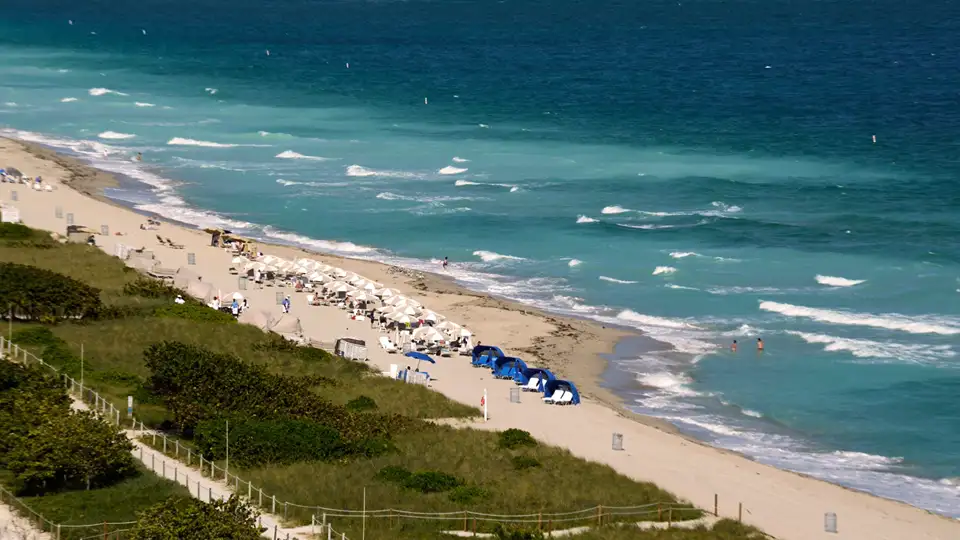Introduction
Coastal erosion continues to challenge communities along Australia’s eastern shoreline, threatening beaches, dunes, and nearby properties. At Surfside Beach in Eurobodalla, this ongoing concern prompted immediate action. The Eurobodalla Council recently implemented a sand scraping program to rebuild eroded dunes and create a temporary buffer against the sea. Supported by emergency funding from the NSW Government, this initiative reflects how local authorities are combining practical engineering with environmental care to safeguard coastal areas.
What is Sand Scraping?
Sand scraping is a coastal management method that involves moving sand from the intertidal zone (the area between high and low tide) to the dune system. This technique helps rebuild dunes that storms or high tides have eroded. Unlike large-scale nourishment projects, sand scraping uses material already present on the beach, making it a cost-effective and environmentally conscious solution.
By re-shaping and redistributing the sand, councils can restore the natural dune contours, providing an immediate barrier to waves and wind. While it’s a short-term measure, sand scraping plays a vital role in buying time for natural dune processes and vegetation to recover.
The Surfside Beach Project
At Surfside’s East Beach reserve, Eurobodalla Council carried out a one-off sand scraping project aimed at repairing erosion and reinforcing the coastal dune. A bulldozer was used to carefully transfer sand from the intertidal zone up onto the dune area, rebuilding its shape and height.
To ensure the structure remained stable, workers installed jute matting across the newly built section. This biodegradable fabric prevents the loose sand from blowing away while native vegetation establishes roots. According to Heidi Thomson, the Council’s coordinator of natural resources, this short-term buffer offers much-needed protection for residents and gives the dune time to settle.
The project was made possible through the NSW Government’s emergency works funding stream, which supports councils in addressing urgent coastal erosion threats.
Stabilizing the Dunes
The success of dune restoration depends not just on reshaping the sand but also on strengthening it with vegetation. To that end, more than 3,000 native coastal plants will be planted by the Surfside Landcare group and local volunteers. These plants play a crucial role in stabilizing the dune, as their root systems bind the sand and help it resist erosion.
Council officials have also urged residents and visitors to avoid walking on the newly formed dunes until they have stabilized. Human disturbance can easily undo the delicate work of sand scraping and replanting, especially during the early stages of restoration.
Environmental and Coastal Benefits
The sand scraping technique provides multiple environmental benefits. It not only restores the natural appearance of the coastline but also helps maintain important habitats for coastal flora and fauna. By rebuilding dunes, the method acts as a buffer that absorbs wave energy, reducing the impact of storm surges and protecting inland areas from flooding.
Additionally, Transport for NSW’s nearby dredging operation is moving offshore sand that will nourish both the eastern and western beaches of Surfside in the coming months. This collaboration between dredging and dune restoration ensures that sand is recycled within the coastal system, enhancing the natural replenishment process and supporting long-term beach health.
Limitations and Long-Term Outlook
While sand scraping offers quick relief from erosion, it is not a permanent solution. Over time, natural coastal processes such as tides, currents, and storms will continue to reshape the shoreline. As Council’s coordinator noted, long-term coastal resilience depends on factors beyond local control, including sand movement patterns and sea level changes.
For lasting protection, dune restoration efforts must be paired with continuous monitoring and adaptive coastal management strategies. This includes ongoing vegetation maintenance, sediment studies, and public education to promote sustainable interaction with coastal environments.
Conclusion
The sand scraping project at Surfside Beach demonstrates how local actions can make a meaningful difference in coastal protection. By combining practical engineering with community participation and environmental awareness, Eurobodalla Council has created a short-term shield that supports natural recovery.
Although temporary, such initiatives buy valuable time for nature to rebuild and for communities to plan more sustainable long-term solutions. Through consistent dune restoration and responsible coastal management, Surfside’s shoreline stands a better chance against the ongoing challenges of erosion and climate change.
